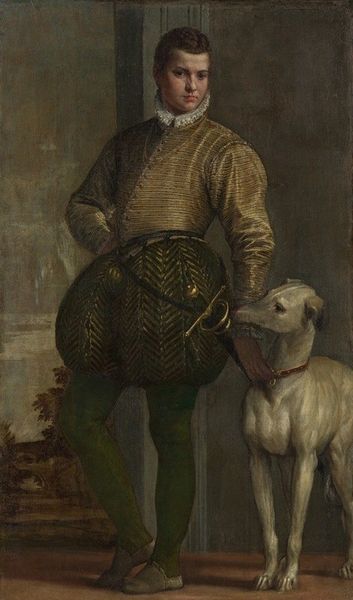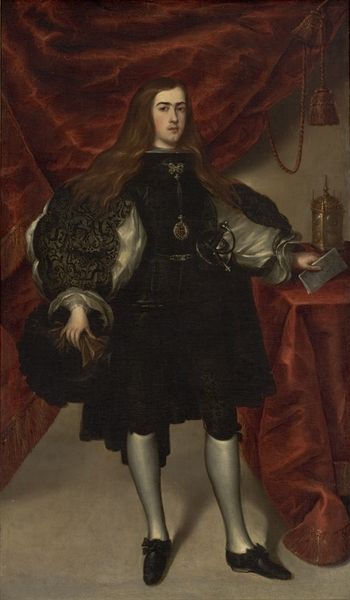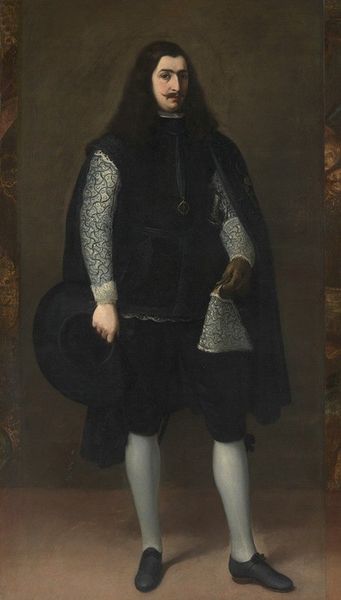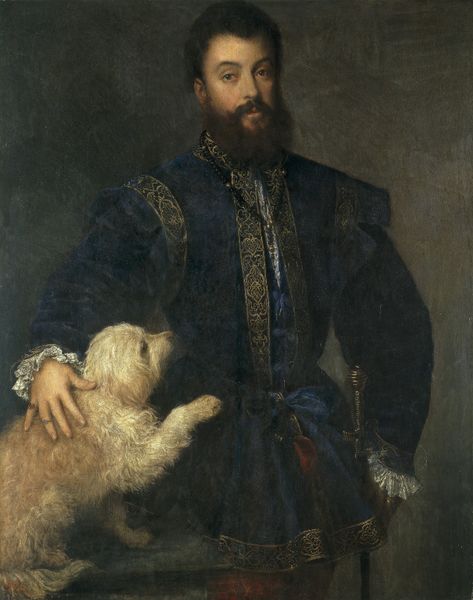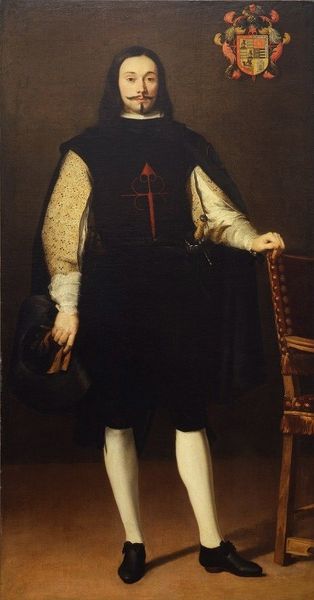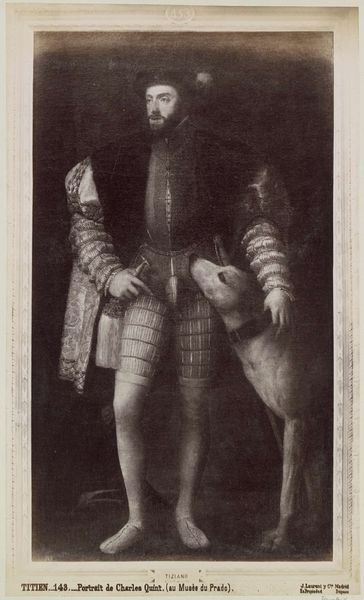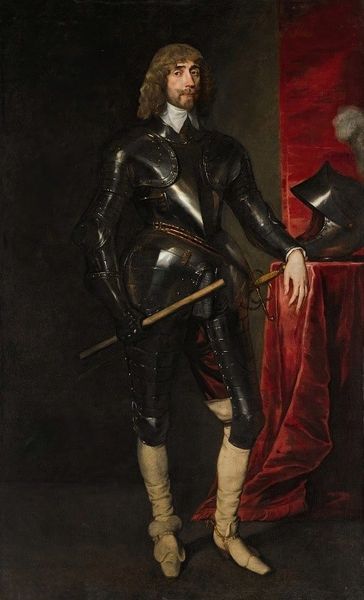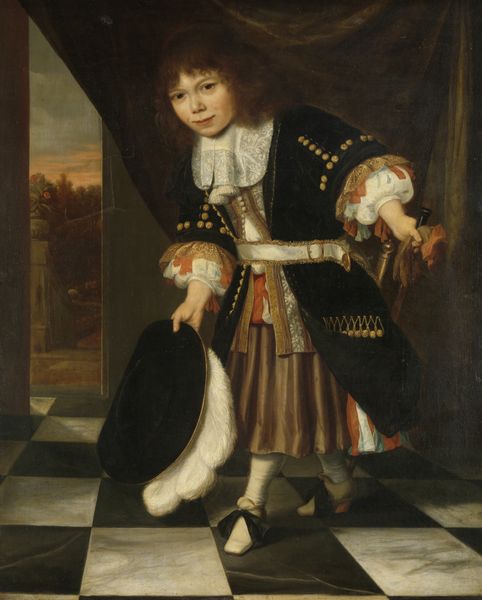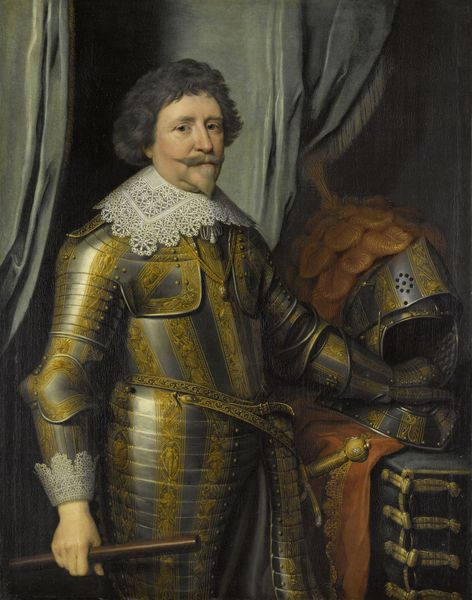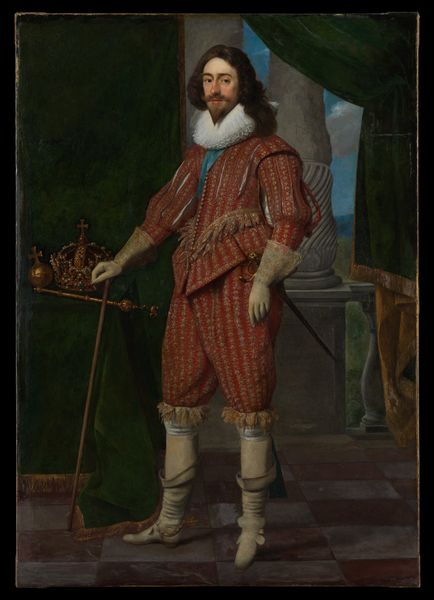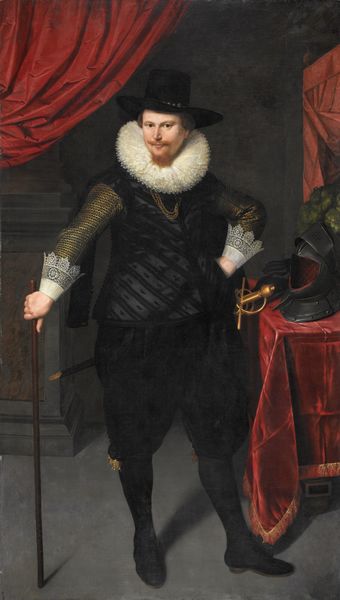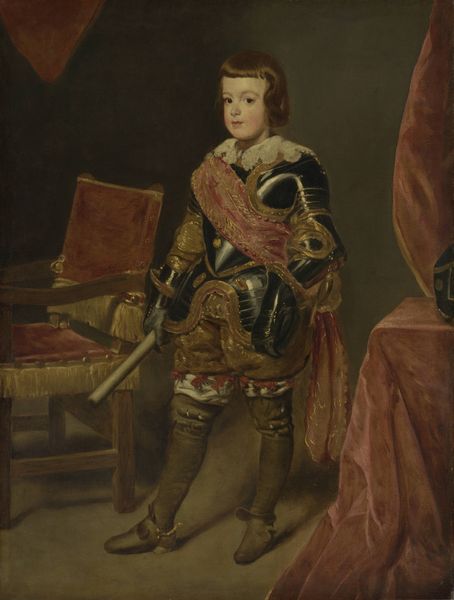
oil-paint
#
portrait
#
high-renaissance
#
venetian-painting
#
allegory
#
oil-paint
#
dog
#
animal portrait
#
history-painting
#
realism
Dimensions: 192 x 111 cm
Copyright: Public domain
Editor: We’re looking at Titian’s “Portrait of Emperor Charles V with a Dog,” painted in 1533. The realism in this oil painting is striking. There’s a sort of formal, staged quality to it, but the presence of the dog adds warmth. How do you interpret the power dynamics presented in this piece? Curator: Well, it’s vital to remember how portraits functioned within 16th-century power structures. This wasn’t simply about capturing a likeness; it was about constructing an image of imperial authority and legitimizing Charles V’s rule. The inclusion of the dog, typically a symbol of loyalty, strengthens that message. But it's also shrewd PR; suggesting that the Emperor, like all good rulers, should be considered kind. The Venetian workshops in the High Renaissance knew how to craft an acceptable persona. What’s interesting is how this image circulated throughout Europe. Editor: You’re suggesting it served as propaganda, a carefully controlled message? Curator: Precisely! Think about the economics involved; portraits like these solidified Charles V's place on the world stage through display in government buildings, traded with friendly emissaries, displayed during town fairs and celebrations. The distribution of these paintings was not random; it had purpose. Did Titian's studio produce the replicas or were there other ateliers who replicated them? Editor: That adds a new dimension. So it’s not just about the artistry; it’s about distribution, and the message being consumed. Curator: Indeed. The visual rhetoric of power goes beyond the subject himself to touch upon how those images function. Today, we have constant imagery blasted across devices. What, then, is the point of painted portraiture for rulers? What replaces this function in our world today? Editor: This reframes my whole understanding! I now understand art and the way distribution has socio-political impact, thanks to your historical contextualization of power and images. Curator: Glad I could provide some perspective, it has been my pleasure to provide the benefit of my historical viewpoint.
Comments
No comments
Be the first to comment and join the conversation on the ultimate creative platform.
